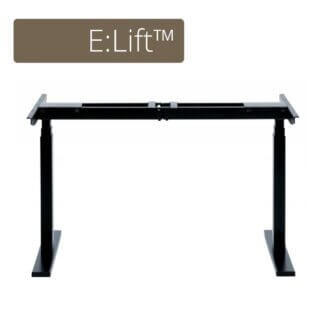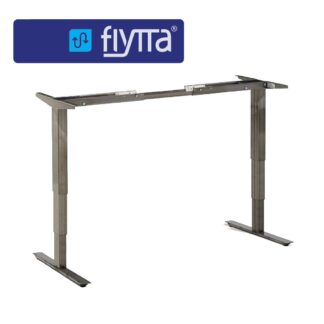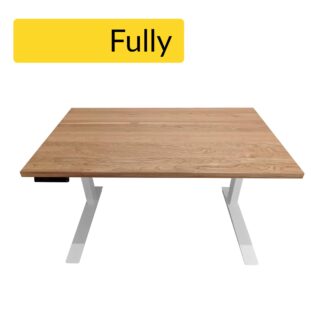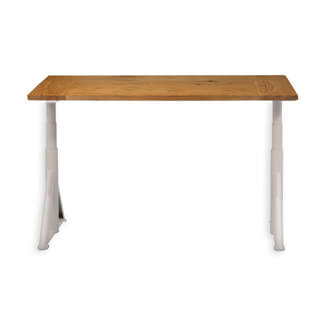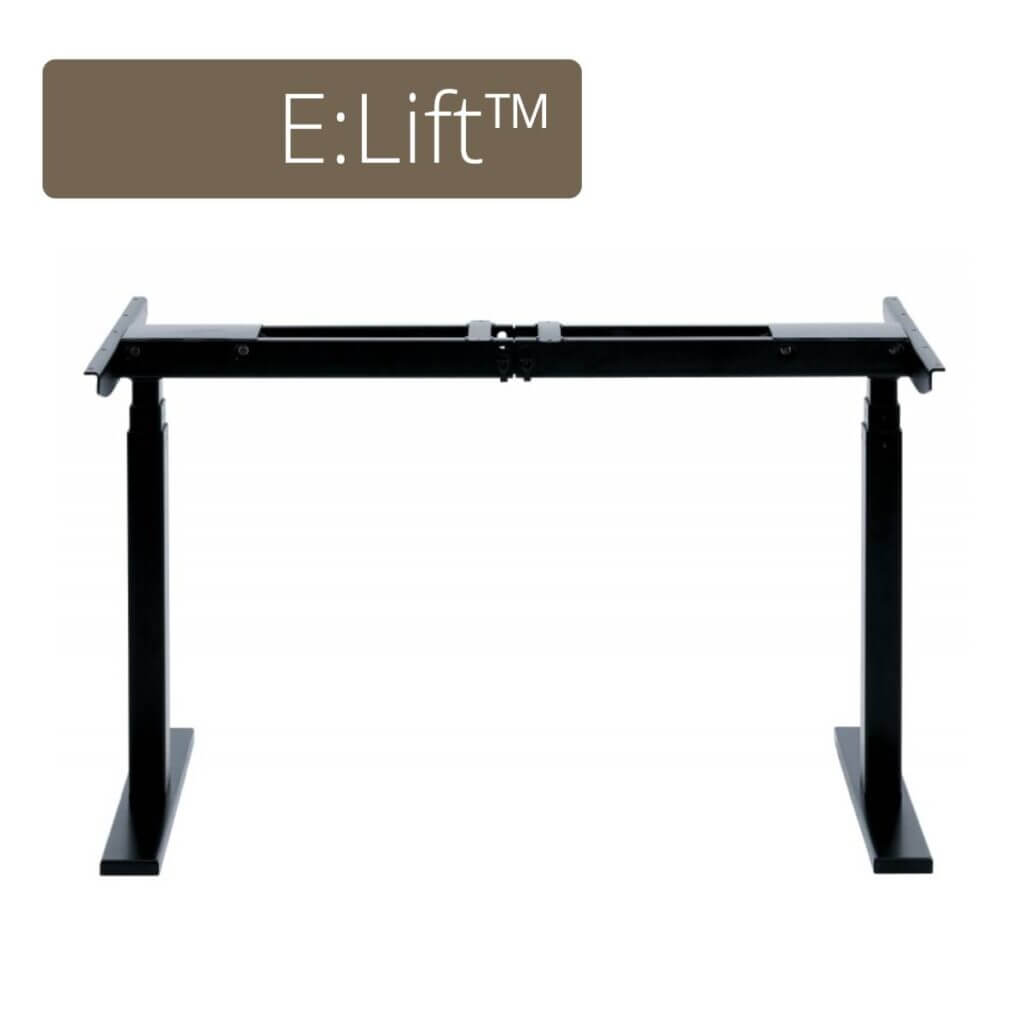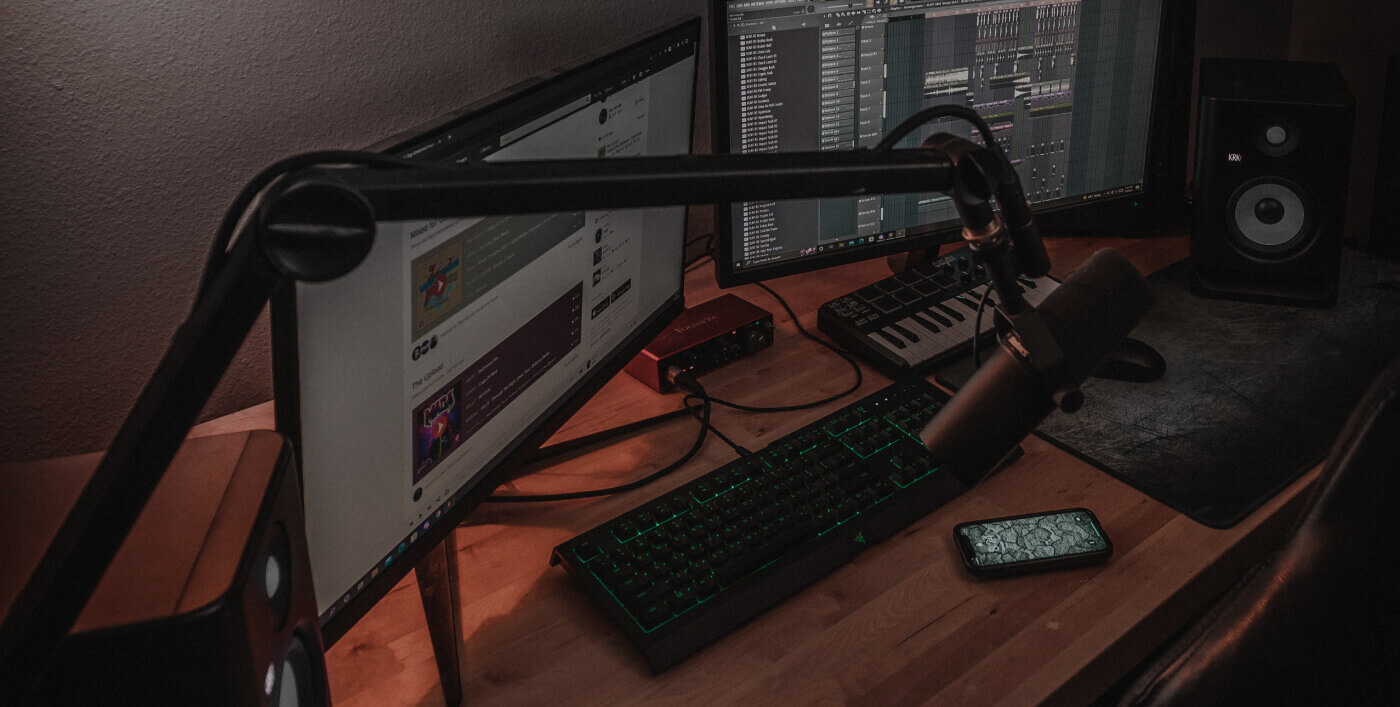
Walnut tops ooze luxury. Few woods are as famous or admired, except maybe ‘rich mahogany’… Known for beautiful grain and deep tones, walnut is often chosen for statement pieces, executive offices, and high-end interiors. But while walnut has undeniable appeal, it isn’t the right choice for every project. Below we take a closer look at the pros and cons of using walnut for desk tops, so you can decide whether it’s the right material for you.
Quick links to the pros
Quick links to the cons
Walnut pros…
Luxurious aesthetic
Walnut is instantly recognisable thanks to its dark, chocolate-brown tones, and unique grain characteristics. This richness gives walnut a sense of warmth and luxury that lighter woods, even hardwoods like oak, simply can’t replicate. If you are looking to make your desk a centrepiece in the room, walnut is a serious contender.
Note: Because of it’s striking appearance, walnut is very rarely finished with any additional colour/stain/paint.
Durability, strength and hardness
American Black Walnut, the variety most commonly used in furniture and desk tops (also at Solid Wood Tops), is a hardwood with excellent structural properties. A hardwood desk top, especially walnut, will last for decades if properly cared for. It resists warping better than many softer woods like pine, more impervious to moisture and temperature changes, making it suitable for long-term use and also for use at much larger sizes.
It’s density and hardness also lend itself well to monitor mounts and camera clamps, as well as screwing other accessories to the underside, including drawer units.
Workability
Contrary to what you might think, walnut’s hardness actually makes it easier to shape. Softer woods are mainly shaped using hand tools, but hardwoods can be used with CNC machines to create flawless custom designs. This makes it a good option for bespoke furniture projects, allowing for clean edges and smooth finishes. The wood also takes oil and other finishes, like Rubio Monocoat Oil 2c particularly well (see below), enhancing its natural beauty.
Prestigious and versatile
Walnut is often associated with premium interiors. It’s a favourite in executive desks, boardroom tables, and high-end home offices. Yet, it’s versatile enough to suit modern spaces too. Sleek frames and minimalist designs work really well with the darker colour. A walnut top instantly improves the look of any desk frame, they are a firm favourite with our customers to pair with height-adjustable frames.
Long-term investment
Although more expensive up front, walnut’s longevity and timeless appeal means it hasn’t really ever gone out of style; and probably won’t. Wood stained to a certain colour is more likely to be a casualty of trends/fads. But a well-maintained walnut desk top can serve for decades, often becoming more beautiful as it ages, and can be sold on if ever the space it occupies needs to be used for something else.
Walnut cons…
Higher cost
The biggest drawback of walnut is its price. As a premium hardwood, walnut costs significantly more than pine, beech, or oak. As such, it is cost prohibitive for many of our customers, there simply isn’t budget in the project to stretch that far.
Note: If walnut is out of budget, perhaps consider the below: stained oak (picture with the 3 monitors) or pine.


Limited availability
Compared to more common hardwoods, walnut is not as widely available in large, consistent stock. This can sometimes mean longer lead times or restrictions in sizing. Stave width is also normally not guaranteed. It should always be a minimum of 120mm (and generally a maximum of 160mm).
Weight
Walnut is a dense hardwood, which makes it relatively heavy. For larger desk tops, this can make installation and moving more challenging. It’s worth considering the frame or base it will be paired with, as the structure needs to be strong enough to support the weight.
Maintenance requirements
While not difficult to look after, walnut will benefit from being treated well. Avoid spills and scratches., but should you need to, most walnut finishes to work well with spot repairs, so water stains can usually be sanded out and refinished by a novice. Read more: How to look after your solid wood desk top
Some specifications of Solid Wood Tops’ walnut
| Property | Detail |
|---|---|
| Species | American Black Walnut (Juglans nigra) |
| Origin | Eastern and Central USA |
| Colour | Rich chocolate brown |
| Grain | Generally straight, occasionally wavy or curly, with a medium texture |
| Density | ~610 kg/m³ (at 12% moisture content) |
| Janka Hardness | ~4,490 N |
| Durability | Moderately durable, resistant to warping and shock |
| Workability | Machines, glues, and finishes well |
Solid walnut desk top gallery

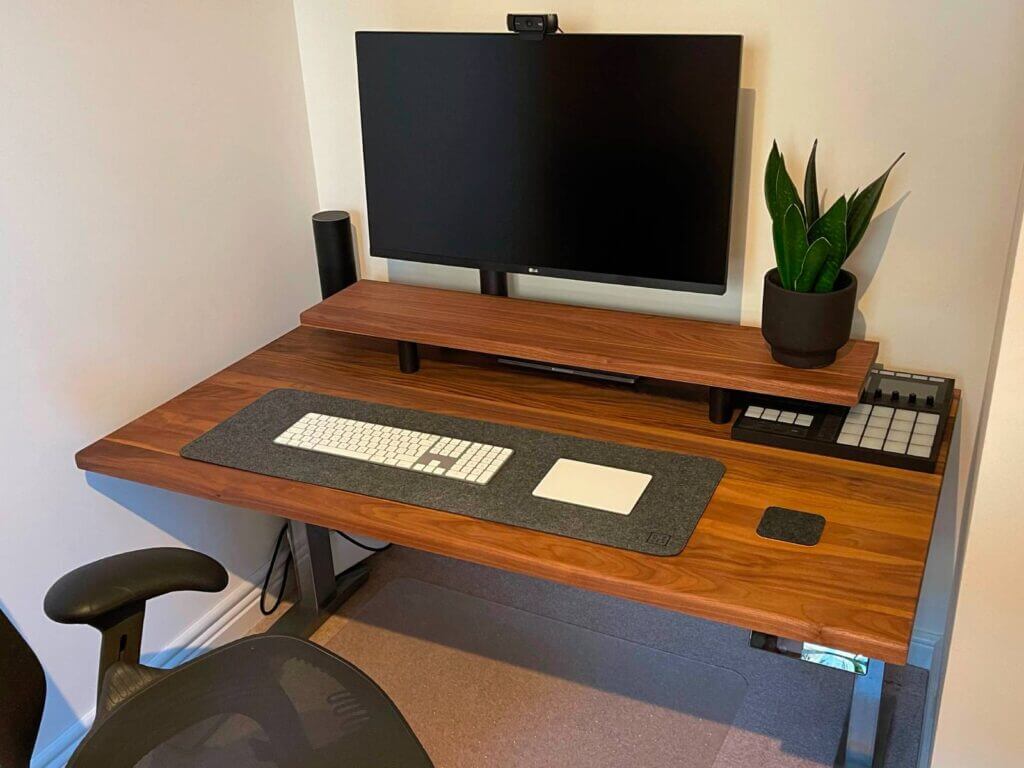


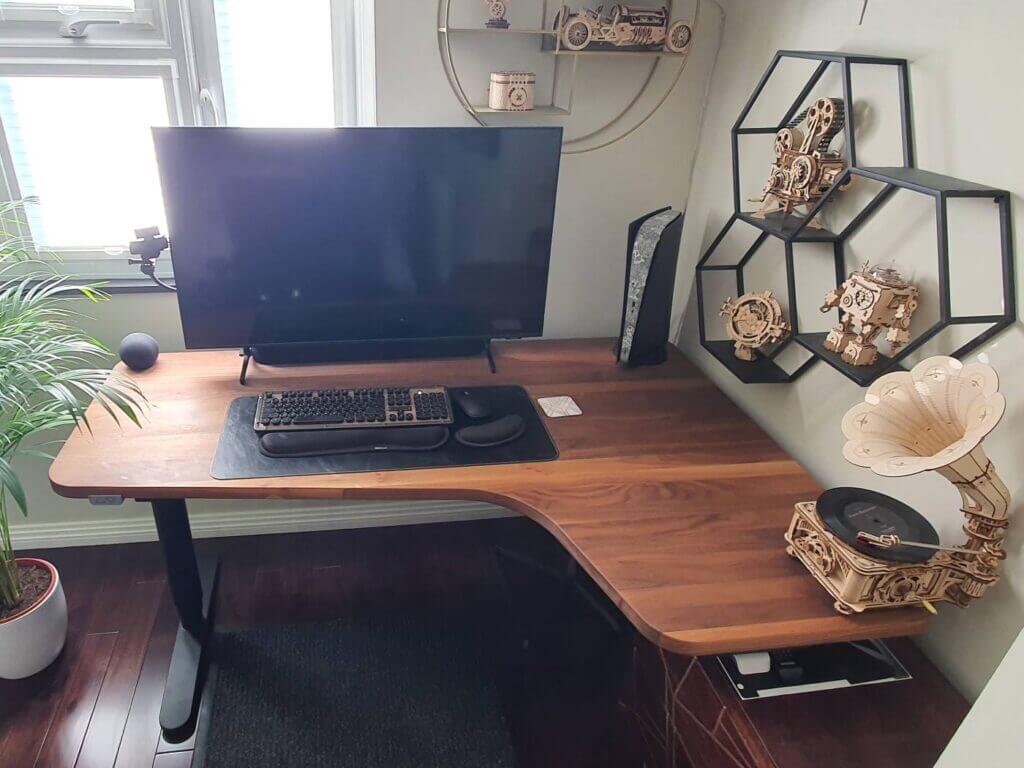




Commission your solid walnut top today
Why Solid Wood Tops?
Custom size? Same price.

Desk top prices are worked out using a going market rate formula. There are no extra charges for non-regular sizes. Calculate your price and order in minutes.
FAQs

Learn more about us, the quality of our partners sustainably sourced wood, how desk tops are priced, delivery timescales etc. Read our articles, FAQs, or chat now.
Flexible delivery options

Our trusted partners are located around the country. Allow us to arrange delivery, pick up from the workshop yourself, or book your own courier.
Money back promise

Order requests have no cost or obligation. If you do decide to confirm, you are protected if there is a problem with the size, design, quality or wood. Order with confidence.


